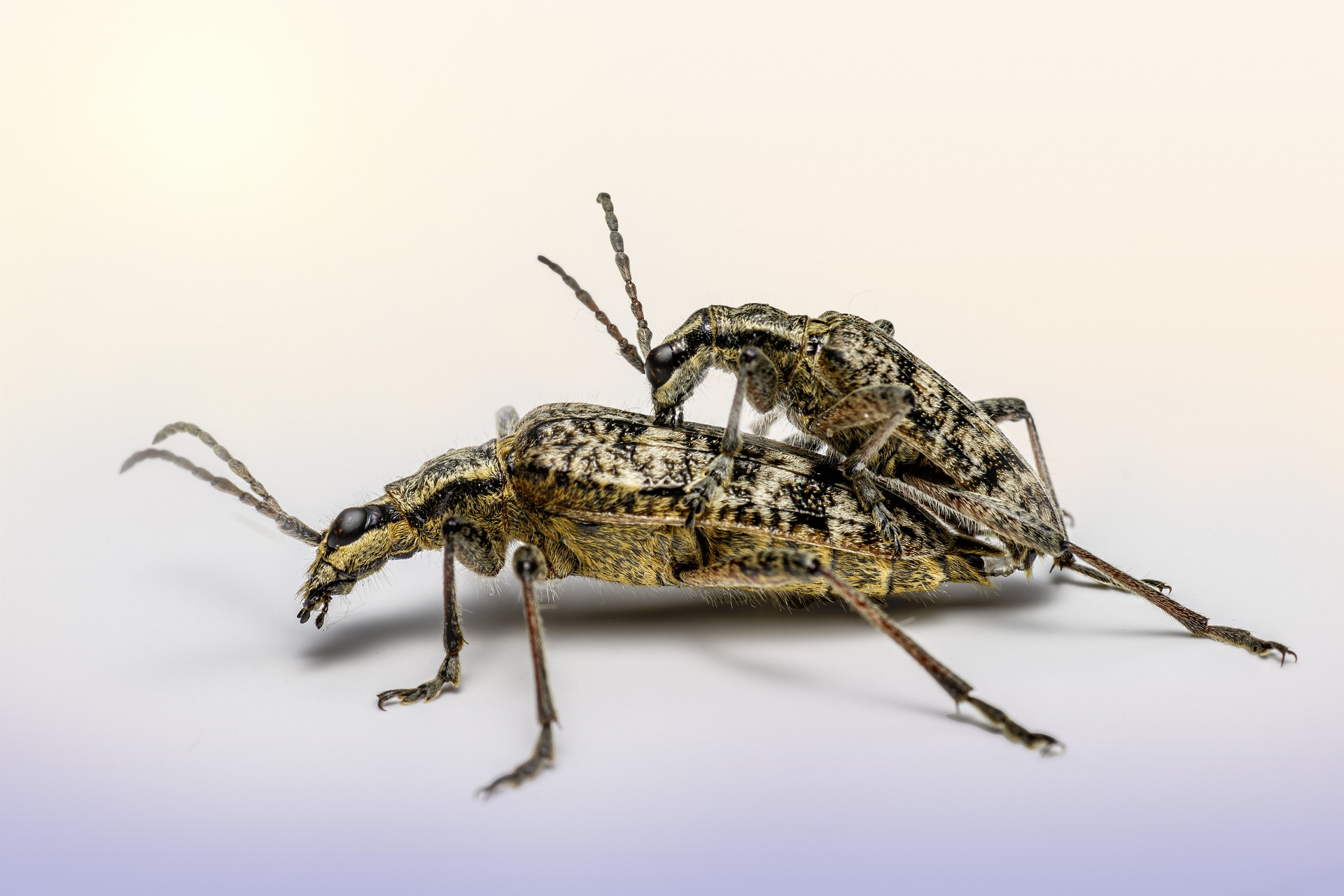That’s an interesting insect! The Black-spotted Longhorn Beetle (Rhagium mordax) is a common beetle belonging to the family Cerambycidae (longhorn beetles). It is particularly recognizable due to its robust size and specific markings.
Here is a deep review of its key characteristics, life cycle, and ecological role.
🐞 Black-spotted Longhorn Beetle (Rhagium mordax) Deep Review
1. Classification and Morphology
| Feature | Detail |
| Family | Cerambycidae (Longhorn Beetles) |
| Size | Medium-to-large, robust beetle, typically 10–22 mm in length. |
| Coloration | The base color is yellowish-brown, tawny, or reddish-brown. The entire body, especially the elytra (wing covers), is covered in fine, pale golden pubescence (short, soft hairs). |
| Key Markings | The elytra are marked with two prominent pairs of irregular black spots or bands—one pair near the middle and one pair closer to the wing tips. These dark spots are what gives the beetle its common name. |
| Antennae | Typical of the longhorn family, but relatively short for a Cerambycid, barely reaching the middle of the elytra. |
| Pronotum | The segment behind the head is narrower than the elytra and possesses a prominent sharp spine on each side. |
| Elytra Shape | The elytra are slightly tapered or narrowed towards the rear. |
2. Habitat and Distribution
- Geographic Range: Widespread across the Palaearctic region, spanning most of Europe (including the UK) eastward through Russia and Siberia.
- Habitat Preference: Strongly associated with woodlands and forested areas, particularly those with a continuous presence of dead or decaying wood, which is essential for its larval development.
- Activity: Adults are active from May to August. They are diurnal (day-active) and are often seen feeding on pollen or resting on flowers, especially those of the Apiaceae family (Umbellifers like Hogweed and Cow Parsley).
3. Life Cycle and Ecology
The Black-spotted Longhorn Beetle’s life cycle is long, primarily revolving around the consumption of wood by its larvae.
- Egg Laying: The female beetle lays her eggs in the bark crevices of dead or recently dead deciduous trees (e.g., oak, beech, birch, maple) and occasionally conifers.
- Larval Stage (Wood Borer): The larvae are xylophagous (wood-eaters) and bore into the dead wood, feeding in the sapwood just beneath the bark.
- This is the longest stage of its life cycle, typically lasting two to three years.
- The larvae are white, fleshy, and legless, with a darker head capsule.
- Pupation (Unique Chamber): The mature larva constructs a unique pupal chamber within the wood. This chamber is created just beneath the bark and is reinforced and enclosed by wood fibers, forming a structure known as a ‘wooden cell’. The larvae then overwinter inside this chamber before pupating in the spring.
- Emergence: The adult beetle emerges by chewing its way out of the pupal cell and through the bark, leaving a characteristic oval exit hole.
4. Ecological Role
- Decomposer: The larvae of Rhagium mordax play a vital role as primary decomposers in the forest ecosystem. By breaking down dead wood, they accelerate nutrient cycling and help clear the forest floor, a crucial function often performed by fungi and other insects.
- Pest Status: The beetle is not considered a pest because its larvae only colonize dead or severely weakened/diseased wood; they do not attack healthy, living trees.
- Food Chain: The adults and larvae serve as food sources for various predators, including woodpeckers and other insectivorous birds.
Visited 880 times, 9 visit(s) today
Views: 3631
Subscribe to the newsletter:
